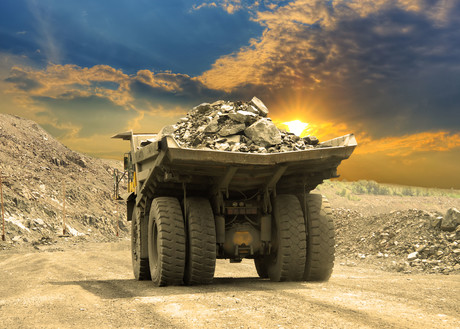Building the mine of the future
By Ralf Eckert, Manager Sales – Mining Systems, Process Industries and Process Automation, ABB Australia
Wednesday, 07 November, 2018

Picture this: a small robot scurries along a rocky surface, seemingly in search of something valuable — but this robot isn’t probing the moon’s craters or searching for life on Mars. In fact, it is looking for deposits of silver in Bolivia’s Cerro Rico mine — considered one of the world’s most dangerous mines.
The robot’s task isn’t just to find traces of silver at Cerro Rico, it is also identifying targets for mining and deciding what equipment would best fit the extraction. The robot then communicates with other smart machines that will enter the mine and start excavation. All the while, humans sitting many miles away are watching the robot’s actions in real time.
This scene has been imagined, and thanks to technological advancements such as artificial learning and autonomous machines, it might soon become a reality.
Now is an exciting time for the global mining industry. Companies are using cutting-edge technology such as drones, sensors and wearable devices to collect real-time information and make better business decisions. Productivity, which had for long been elusive in the industry, is emerging — and companies have understood the potential of digitalisation to keep this momentum going.
Demand for new-age metals such as lithium and nickel — used in making batteries for electric vehicles — has spiralled. The opportunity has brought with it the challenges of understanding a nascent market with limited supply sources. How can a company gain an edge over competition in this promising market?
The digital mine might hold the answer. Digital technology is helping mining companies across the world realise the true potential of their assets in a safe and sustainable way, and the digital mine will come equipped with a full suite of capabilities that will take efficiency to the next level.
An example is mine location intelligence — a platform that allows companies to operate their mines from remote locations, while real-time positioning gives miners complete control of equipment and reduces evacuation time. Such technology continuously monitors and analyses operations of core equipment such as the hoist, and detects abnormal safety conditions.
In the digital world, we are creating about 2.5 quintillion bytes of data every day. This pace is only going to accelerate as more devices are equipped with capabilities connected via the IoT. This vast data needs to be assimilated so that companies can gain insight into their operations and close the gap between data and action.
Mining companies should also be able to quickly detect anomalies such as equipment malfunction due to the risky and capital-intensive nature of the business. Unsafe mines such as the Cerro Rico have often led to miner fatalities, sometimes causing irrevocable damages for companies.
Technology also helps reduce the possibility of mining mishaps. Miners can use deep learning technology to predict maintenance issues for equipment. Once the issue is identified, operators can use intelligent scenario forecasting software to build and test various solutions on a digital simulation before deploying the best one on the actual mine.
While the world is far away from creating completely minerless mines, technology has reduced energy usage, downtime and noise, and reduced the need for on-site expertise, while increasing productivity and raising safety standards.
Rising cyber threats to Australia's industrial sector demand urgent action
Now is the time for organisations to prioritise OT security so that Australia's industrial...
Linux is coming!
The Linux operating system is growing in popularity with industrial controller vendors.
Every time you update an OT network your cyber risk increases
OT network operators are unknowingly introducing significant cyberthreats to their networks every...








